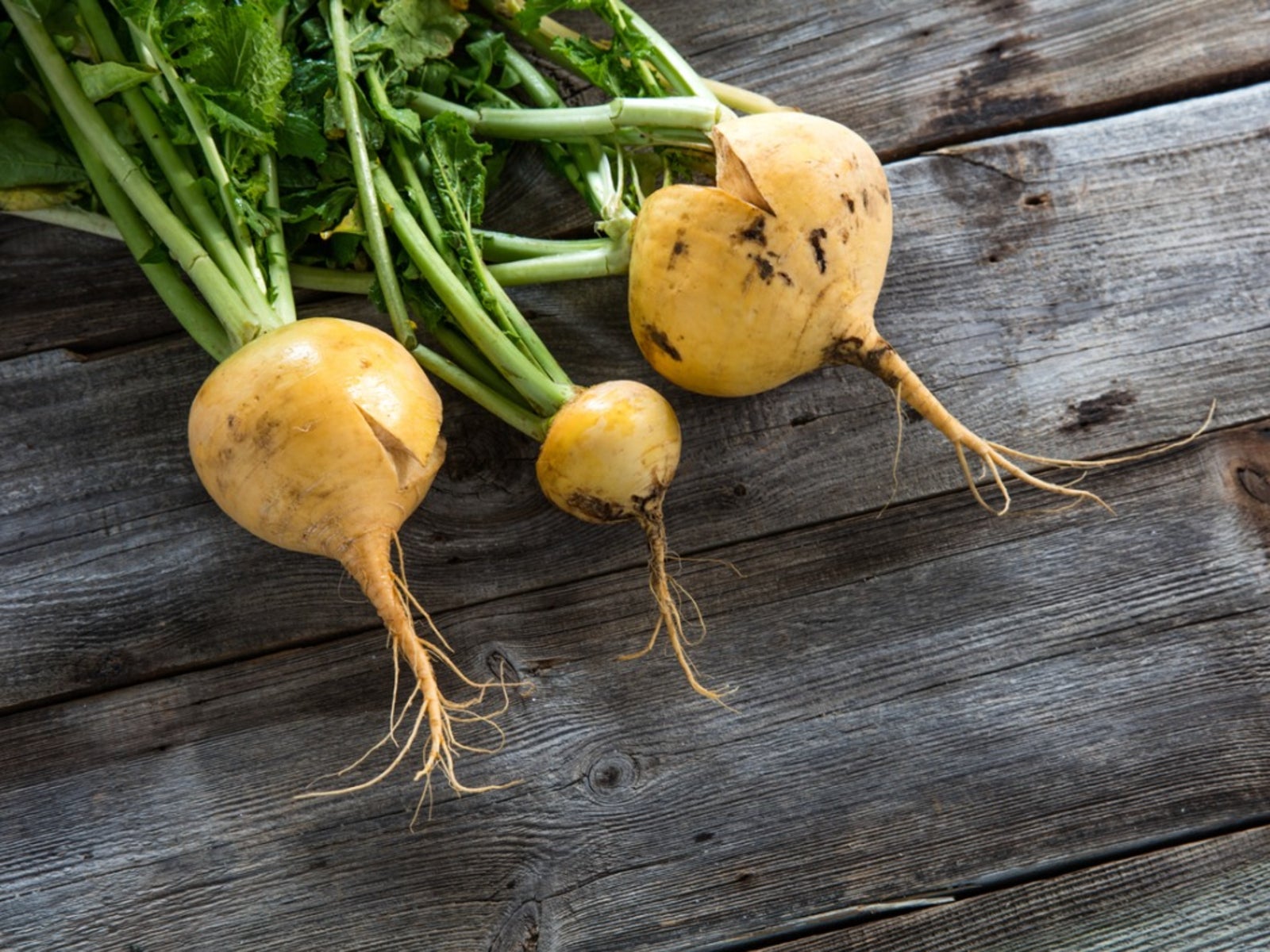Turnips Are Cracking: What Causes Turnips To Crack Or Rot

Turnips are cool season vegetables grown for both their roots and for their nutrient rich green tops. Unblemished medium sized turnips are of the best quality, but sometimes you may see cracked roots on your turnips or rotten turnip roots. What causes turnips to crack and how can you fix turnip cracking?
What Causes Turnips to Crack?
Turnips prefer full sun exposure in fertile, deep, well drained soils. Turnips are started from seed two to three weeks before the last frost of the season. Soil temps should be at least 40 degrees F. (4 C.). Seeds will germinate best at 60 to 85 degrees F. (15-29 C.) and will take seven to ten days. If your soil is a heavy clay, it's best to amend it with plenty of organic matter, 2 to 4 inches (5-10 cm.) and a dose of all-purpose fertilizer prior to planting; 2 to 4 cups (.5-1 L.) of 16-16-8 or 10-10-10 per 100 square feet (9.29 sq. m.) worked into the upper 6 inches (15 cm.) of soil. Sow seeds ¼ to ½ inch (6-13 mm.) deep in rows 18 inches (46 cm.) apart. Thin the seedlings 3 to 6 inches (8-15 cm.) apart. So what causes cracked roots on turnips? Temperatures of over 85 degrees F. (29 C.) can affect turnips, yet they tolerate low temperatures quite well. Regular irrigation is a must for the most palatable turnip growth. A drip system would be ideal and mulching around the plants will also aid in moisture conservation. Turnip plants will need 1 to 2 inches (2.5-5 cm.) per week depending upon the weather, of course. Inadequate or irregular irrigation is the most likely reason when turnips are cracking. The stress will affect growth, decrease quality, and make for a bitter flavored root. Regular watering is paramount, especially during high summer temps, to prevent cracked roots on turnip, as well as pithiness and bitter flavor. Turnips also tend to crack when a heavy downpour follows a dry period. Balanced fertility is also a factor regarding the splitting of turnip roots. Feed the plants ¼ cup (50 g.) per 10 feet (3 m.) of row with a nitrogen based fertilizer (21-0-0) six weeks after the seedlings first emerge. Sprinkle the fertilizer around the base of the plants and water it in to encourage rapid plant growth. So there you have it. How to fix turnip cracking couldn't be easier. Simply avoid water or fertilizer stress. Mulch to cool the soil, conserve water, and control weeds and you should have crack free turnip roots about two to three weeks after the first fall frost.
Sign up for the Gardening Know How newsletter today and receive a free copy of our e-book "How to Grow Delicious Tomatoes".

Amy Grant has been gardening for 30 years and writing for 15. A professional chef and caterer, Amy's area of expertise is culinary gardening.
